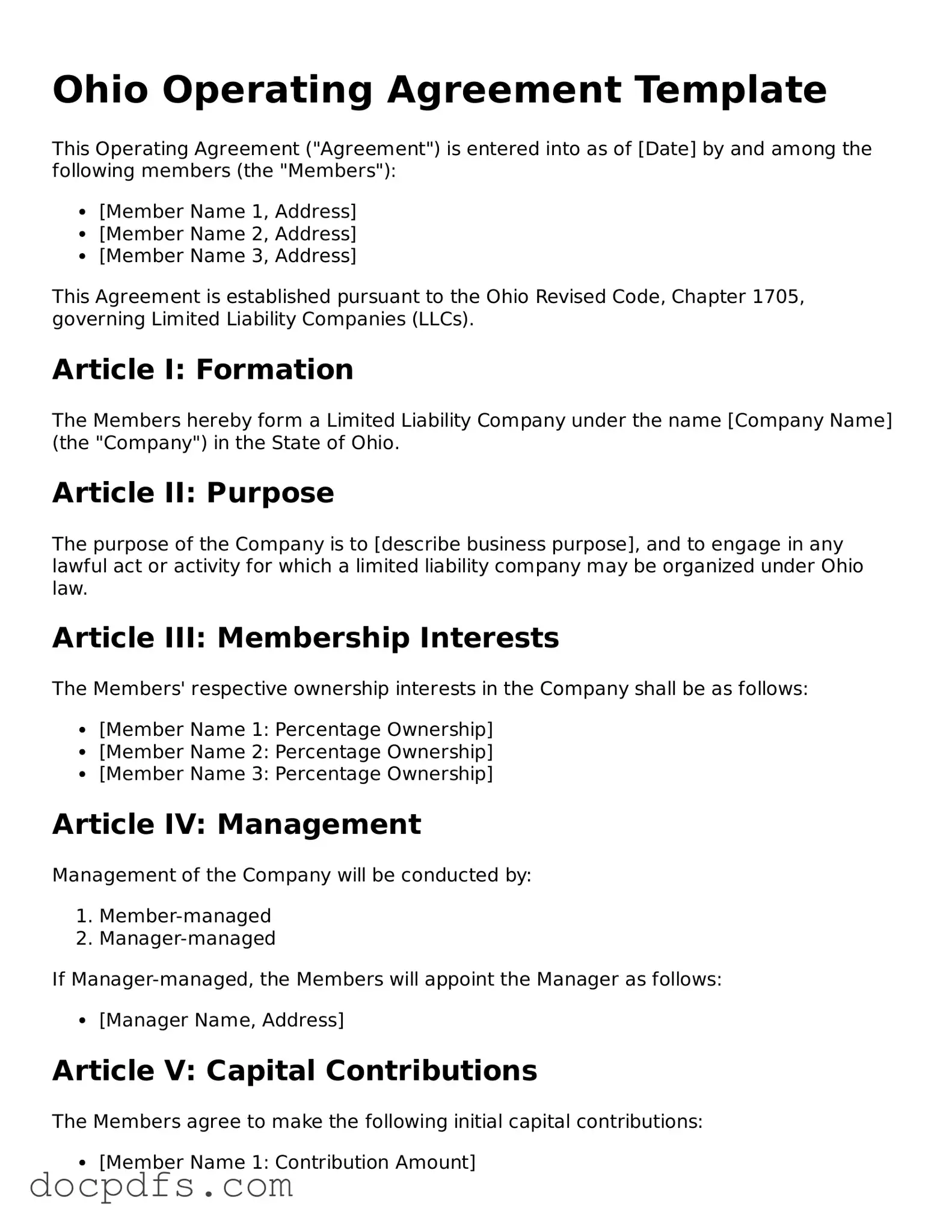What is an Ohio Operating Agreement?
An Ohio Operating Agreement is a legal document that outlines the management structure and operational procedures of a limited liability company (LLC) in Ohio. It serves as an internal guideline for the members of the LLC, detailing their rights, responsibilities, and the rules governing the company’s operations.
Why is an Operating Agreement important?
This document is crucial for several reasons:
-
It helps define the roles and responsibilities of each member.
-
It can prevent misunderstandings and disputes among members.
-
It provides a framework for decision-making and profit distribution.
-
It can enhance credibility with banks and investors.
Is an Operating Agreement required in Ohio?
While Ohio law does not mandate that LLCs have an Operating Agreement, it is highly recommended. Without one, the company will default to the state’s default rules, which may not align with the members' intentions or best interests.
Who should draft the Operating Agreement?
Members of the LLC can draft the Operating Agreement themselves or seek assistance from a legal professional. It is advisable to consult with a lawyer to ensure that the agreement complies with Ohio laws and adequately addresses the specific needs of the business.
What should be included in the Operating Agreement?
A comprehensive Operating Agreement typically includes the following elements:
-
Company name and principal office address
-
Purpose of the LLC
-
Member contributions and ownership percentages
-
Management structure (member-managed or manager-managed)
-
Voting rights and decision-making processes
-
Distribution of profits and losses
-
Procedures for adding or removing members
-
Dispute resolution methods
-
Amendment procedures for the agreement
Can the Operating Agreement be amended?
Yes, the Operating Agreement can be amended. The process for making changes should be clearly outlined in the agreement itself. Typically, amendments require a vote from the members, and a written record of the changes should be maintained.
How does the Operating Agreement affect taxes?
The Operating Agreement does not directly affect how the LLC is taxed. However, it can influence the distribution of profits and losses, which may impact members' individual tax situations. It is important to consult with a tax professional to understand the implications fully.
What happens if there is no Operating Agreement?
If an LLC does not have an Operating Agreement, it will default to Ohio’s statutory rules. This may lead to unintended consequences, such as default management structures and profit distributions that do not reflect the members' intentions. Disputes may arise more easily without a clear framework in place.
Where can I find a template for an Ohio Operating Agreement?
Templates for Ohio Operating Agreements can be found online through various legal websites. Many offer customizable templates that allow you to tailor the agreement to your specific needs. However, it is recommended to review any template with a legal professional to ensure compliance with state laws.
